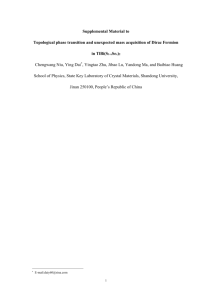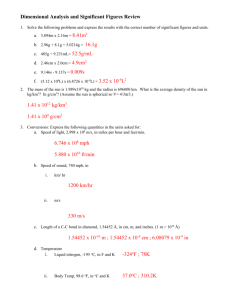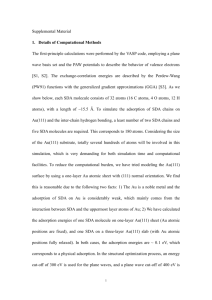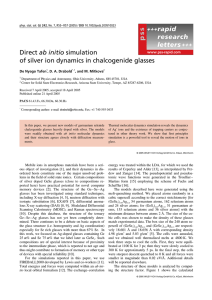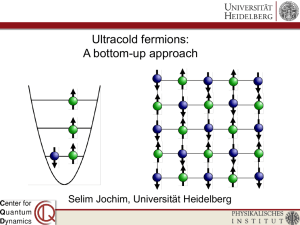Supplementary Material for Chemical Communications This journal
advertisement
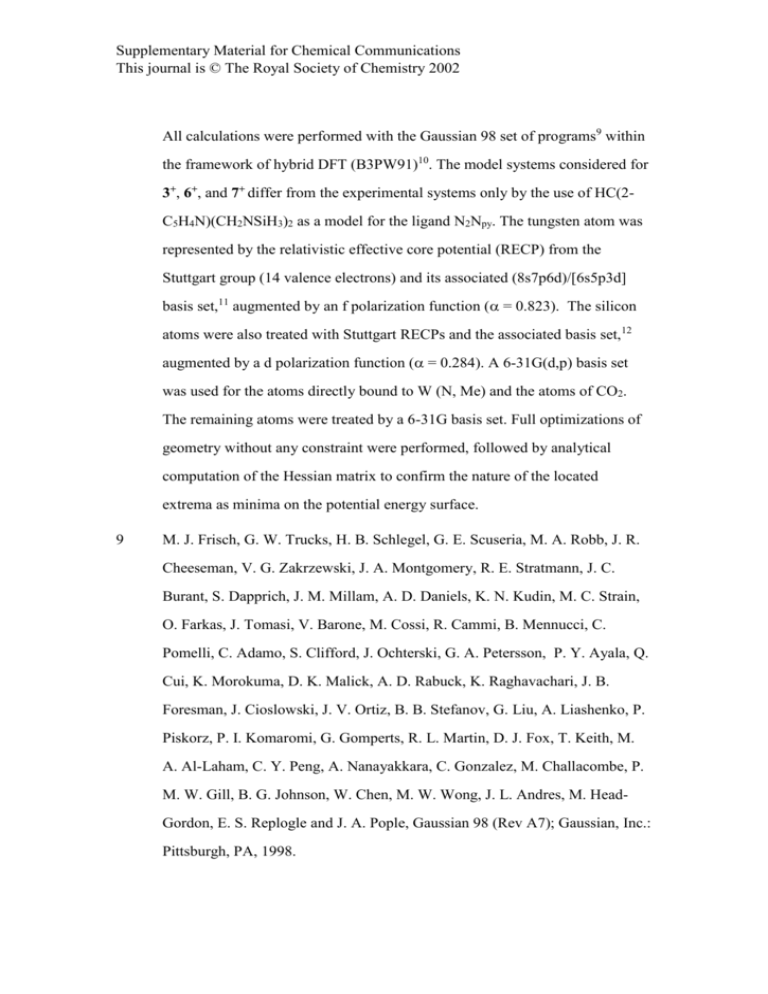
Supplementary Material for Chemical Communications This journal is © The Royal Society of Chemistry 2002 All calculations were performed with the Gaussian 98 set of programs9 within the framework of hybrid DFT (B3PW91)10. The model systems considered for 3+, 6+, and 7+ differ from the experimental systems only by the use of HC(2C5H4N)(CH2NSiH3)2 as a model for the ligand N2Npy. The tungsten atom was represented by the relativistic effective core potential (RECP) from the Stuttgart group (14 valence electrons) and its associated (8s7p6d)/[6s5p3d] basis set,11 augmented by an f polarization function ( = 0.823). The silicon atoms were also treated with Stuttgart RECPs and the associated basis set,12 augmented by a d polarization function ( = 0.284). A 6-31G(d,p) basis set was used for the atoms directly bound to W (N, Me) and the atoms of CO2. The remaining atoms were treated by a 6-31G basis set. Full optimizations of geometry without any constraint were performed, followed by analytical computation of the Hessian matrix to confirm the nature of the located extrema as minima on the potential energy surface. 9 M. J. Frisch, G. W. Trucks, H. B. Schlegel, G. E. Scuseria, M. A. Robb, J. R. Cheeseman, V. G. Zakrzewski, J. A. Montgomery, R. E. Stratmann, J. C. Burant, S. Dapprich, J. M. Millam, A. D. Daniels, K. N. Kudin, M. C. Strain, O. Farkas, J. Tomasi, V. Barone, M. Cossi, R. Cammi, B. Mennucci, C. Pomelli, C. Adamo, S. Clifford, J. Ochterski, G. A. Petersson, P. Y. Ayala, Q. Cui, K. Morokuma, D. K. Malick, A. D. Rabuck, K. Raghavachari, J. B. Foresman, J. Cioslowski, J. V. Ortiz, B. B. Stefanov, G. Liu, A. Liashenko, P. Piskorz, P. I. Komaromi, G. Gomperts, R. L. Martin, D. J. Fox, T. Keith, M. A. Al-Laham, C. Y. Peng, A. Nanayakkara, C. Gonzalez, M. Challacombe, P. M. W. Gill, B. G. Johnson, W. Chen, M. W. Wong, J. L. Andres, M. HeadGordon, E. S. Replogle and J. A. Pople, Gaussian 98 (Rev A7); Gaussian, Inc.: Pittsburgh, PA, 1998. Supplementary Material for Chemical Communications This journal is © The Royal Society of Chemistry 2002 10 (a) A. D. J. Becke, J. Chem. Phys., 1993, 98, 5648; (b) J. P. Perdew and Y. Wang, Phys. Rev. B, 1992, 82, 284. 11 D. Andrae, U. Häussermann, M. Dolg, H. Stoll and H. Preuss, Theor. Chim. Acta, 1990, 77, 123. 12 A. Bergner, M. Dolg, W. Küchle, H. Stoll and H. Preuss, Mol. Phys., 1990, 30, 1431.



